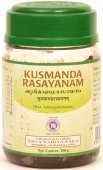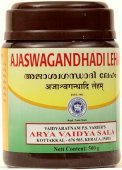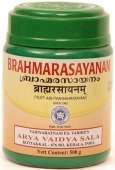Kshaudra, Kṣaudra: 17 definitions
Introduction:
Kshaudra means something in Hinduism, Sanskrit. If you want to know the exact meaning, history, etymology or English translation of this term then check out the descriptions on this page. Add your comment or reference to a book if you want to contribute to this summary article.
The Sanskrit term Kṣaudra can be transliterated into English as Ksaudra or Kshaudra, using the IAST transliteration scheme (?).
In Hinduism
Ayurveda (science of life)
Dietetics and Culinary Art (such as household cooking)
Source: Shodhganga: Dietetics and culinary art in ancient and medieval IndiaKṣaudra (क्षौद्र) refers to one of the eight kinds of honey (madhu) according to the Suśrutasaṃhitā Sūtrasthāna 45.133, and is commonly found in literature dealing with the topics of dietetics and culinary art, also known as Pākaśāstra or Pākakalā.—Honey was possibly, the earliest sweet thing Indians knew. [...] According to Suśruta the eight varieties of honey are mākṣika, bhrāmara, kṣaudra, pauttika, chātra, ārghya, auddalika and dāla each of these being obtained from different types of bees. The Aṣṭāṅgasaṅgraha, a medieval period text, states that among the eight varieties of honey bhrāmara, pauttika, kṣaudra and mākṣika are considered good in the increasing order (cf. Sūtrasthāna VI.98).
Kṣaudra is also mentioned as one of the eight kinds of honey (madhu) according to the 17th century Bhojanakutūhala (dravyaguṇāguṇa-kathana). According to the same text, kṣaudra or “honey” is mutually incompatible (viruddhāhāra) with Ānūpamāmṣa (the meat of animals living in marshy lands).
Toxicology (Study and Treatment of poison)
Source: Shodhganga: Kasyapa Samhita—Text on Visha ChikitsaKṣaudra (क्षौद्र) refers to “honey”, and is used in the treatment of Rājilā-snake-bites, according to the Kāśyapa Saṃhitā: an ancient Sanskrit text from the Pāñcarātra tradition dealing with both Tantra and Viṣacikitsā—an important topic from Āyurveda which deals with the study of Toxicology (Viṣavidyā or Sarpavidyā).—The tenth Adhyāya prescribes antidotes for Rājilā snake venom.—According to the Kāśyapasaṃhitā verse X.4: “An immediate and quick antidote to Rajāli viṣa is drinking a mouthful of salt, long pepper, cardamom, honey (kṣaudra), cow dung and ghee”.
Agriculture (Krishi) and Vrikshayurveda (study of Plant life)
Source: Shodhganga: Drumavichitrikarnam—Plant mutagenesis in ancient IndiaKṣaudra (क्षौद्र) refers to “honey”, and is used in various bio-organic manipulation processes, according to the Vṛkṣāyurveda by Sūrapāla (1000 CE): an encyclopedic work dealing with the study of trees and the principles of ancient Indian agriculture.—For example, [while describing the recipe for producing flowers and fruits out-of-season (akāla)]: “Trees produce flowers and fruits out of season undoubtedly if the following procedure is followed: Dioscorea bulbifera, Cuminum cyminum seed and sugarcane juice should be kept for a month in a pot containing clarified butter prepared in the moonlight and when the mixture is well formed, roots of the trees should be smeared with it and the basin should be filled with mud. Then sugarcane juice should be profusely sprinkled and the trees should be smoked with honey (kṣaudra) and kuṇapa”.
Unclassified Ayurveda definitions
Source: Wisdom Library: Āyurveda and botanyKsaudra (क्सौद्र) refers to a “pale-colored honey” and is used throughout Ayurvedic literature such as the Caraka-saṃhitā. An alkaline substance is a synonym for a soluble base. In the Tibetan language it is known as ‘ser-kya snaṅ-pa’.
Source: archive.org: Vagbhata’s Ashtanga Hridaya Samhita (first 5 chapters)Kṣaudra (क्षौद्र) refers to “honey”, as mentioned in verse 5.29-31 of the Aṣṭāṅgahṛdayasaṃhitā (Sūtrasthāna) by Vāgbhaṭa.—Accordingly, “[...] Of sour digestion and taste, constipating, heavy, (and) warming (are) curds [viz., dadhi]; Never shall one take them at night, never warm, (and) not in spring, summer, and autumn (in any other season) not without mung-bean soup nor without honey [viz., na-a-kṣaudra] nor without ghee and sugar nor without emblic myrobalans, also not continuously and not slightly unfinished”.
Source: gurumukhi.ru: Ayurveda glossary of termsKṣaudra (क्षौद्र):—Variety of honey collected from small type of honey-bee, its of brownish color. Its of ununctuous and astringent taste and cold in potency. It aggravates Vata and alleviator of Pitta.

Āyurveda (आयुर्वेद, ayurveda) is a branch of Indian science dealing with medicine, herbalism, taxology, anatomy, surgery, alchemy and related topics. Traditional practice of Āyurveda in ancient India dates back to at least the first millenium BC. Literature is commonly written in Sanskrit using various poetic metres.
Purana and Itihasa (epic history)
Source: archive.org: Nilamata Purana: a cultural and literary studyKṣaudra (क्षौद्र) is another name for Madhu (“honey”), forming part of a common diet in ancient Kashmir (Kaśmīra) as mentioned in the Nīlamatapurāṇa.—Honey (Madhu or Kṣaudra) is recommended as an offering to be made to the goddess Śyāmā (verse 800). Various sorts of food preparations sweetened with honey are referred to (verses 503, 691). Another name of honey is Kṣaudra (verse 694). Most of the references to the articles of diet occur in the Nīlamata in connection with the offerings made to the gods but it is not difficult to infer from them the food and drink of the common people because “what a man eats his gods eat”.

The Purana (पुराण, purāṇas) refers to Sanskrit literature preserving ancient India’s vast cultural history, including historical legends, religious ceremonies, various arts and sciences. The eighteen mahapuranas total over 400,000 shlokas (metrical couplets) and date to at least several centuries BCE.
Languages of India and abroad
Sanskrit dictionary
Source: DDSA: The practical Sanskrit-English dictionaryKṣaudra (क्षौद्र).—1 The Champaka tree.
2) Name of a mixed caste; (son of a Vaideha and Māgadhī)
-dram 1 Smallness.
2) Meanness, lowness.
3) Honey; स क्षौद्रपटलैरिव (sa kṣaudrapaṭalairiva) R.4.63.
4) Water.
5) A particle of dust. -a. Small; क्षौद्रालापय कामदं श्रियमृते सैवैकनिष्ठा स्त्रियाम् (kṣaudrālāpaya kāmadaṃ śriyamṛte saivaikaniṣṭhā striyām) Bhāgavata 1.9.24.
Derivable forms: kṣaudraḥ (क्षौद्रः).
Source: Cologne Digital Sanskrit Dictionaries: Shabda-Sagara Sanskrit-English DictionaryKṣaudra (क्षौद्र).—n.
(-draṃ) 1. Honey. 2. Water. m.
(-draḥ) A flower, (Michelia champaca.) E. kṣudrā a fly, &c. affix añ.
Source: Cologne Digital Sanskrit Dictionaries: Benfey Sanskrit-English DictionaryKṣaudra (क्षौद्र).—i. e. kṣudra + a, I. m. 1. The name of a tree, Michelia campaka, Mahābhārata 3, 11569. 2. The name of a mixed caste, the offspring of a Vaideha man and a Māgadhī woman, Mahābhārata 13, 2584. Ii. n. Honey, [Mānavadharmaśāstra] 10, 88.
Source: Cologne Digital Sanskrit Dictionaries: Cappeller Sanskrit-English DictionaryKṣaudra (क्षौद्र).—[masculine] a cert. tree, [Name] of a caste; [neuter] a species of honey.
Source: Cologne Digital Sanskrit Dictionaries: Monier-Williams Sanskrit-English Dictionary1) Kṣaudra (क्षौद्र):—m. ([from] kṣudra and drā), Michelia Campaka, [Mahābhārata iii, 11569]
2) Name of a mixed caste (son of a Vaideha and a Māgadhī), [Mahābhārata xiii, 2584]
3) n. smallness, minuteness [gana] pṛthvādi
4) honey, species of honey, [cf. Lexicographers, esp. such as amarasiṃha, halāyudha, hemacandra, etc.]
5) water, [cf. Lexicographers, esp. such as amarasiṃha, halāyudha, hemacandra, etc.]
6) Name of a Sūtra of the [Sāma-veda]
Source: Cologne Digital Sanskrit Dictionaries: Yates Sanskrit-English DictionaryKṣaudra (क्षौद्र):—(draṃ) 1. n. Honey; water. m. A flower (Michelia champaca).
Source: DDSA: Paia-sadda-mahannavo; a comprehensive Prakrit Hindi dictionary (S)Kṣaudra (क्षौद्र) in the Sanskrit language is related to the Prakrit word: Khodda.
[Sanskrit to German]
Sanskrit, also spelled संस्कृतम् (saṃskṛtam), is an ancient language of India commonly seen as the grandmother of the Indo-European language family (even English!). Closely allied with Prakrit and Pali, Sanskrit is more exhaustive in both grammar and terms and has the most extensive collection of literature in the world, greatly surpassing its sister-languages Greek and Latin.
Kannada-English dictionary
Source: Alar: Kannada-English corpusKṣaudra (ಕ್ಷೌದ್ರ):—
1) [noun] a sweet sticky yellowish fluid made by bees and other insects from nectar collected from flowers; honey.
2) [noun] the quality of being mean, despicable or contemptible; meanness.
3) [noun] water.
4) [noun] a particle of dust.
Kannada is a Dravidian language (as opposed to the Indo-European language family) mainly spoken in the southwestern region of India.
See also (Relevant definitions)
Starts with: Kshaudradhatu, Kshaudraja, Kshaudraka, Kshaudrakamalava, Kshaudrakamalavaka, Kshaudraki, Kshaudrakya, Kshaudrameha, Kshaudramehin, Kshaudranibha, Kshaudrapatala, Kshaudrapriya, Kshaudrarupa, Kshaudrasharkara, Kshaudrasutra, Kshaudravarna, Kshaudravarnarasa, Kshaudraya.
Ends with: Akshaudra, Kusumakshaudra.
Full-text (+14): Kshaudraja, Kshaudrameha, Kshaudradhatu, Kshaudrapriya, Kshaudreya, Kshaudramehin, Kshaudrapatala, Kshaudrasharkara, Praprinayati, Kshaudrakamalavaka, Kshaudraka, Madhuparka, Khodda, Kshaudraki, Ghritakshaudravat, Kshaudrakamalava, Mehin, Kshaudrakya, Ashtamadhu, Kshudra.
Relevant text
Search found 13 books and stories containing Kshaudra, Kṣaudra, Ksaudra; (plurals include: Kshaudras, Kṣaudras, Ksaudras). You can also click to the full overview containing English textual excerpts. Below are direct links for the most relevant articles:
Manusmriti with the Commentary of Medhatithi (by Ganganatha Jha)
Verse 10.88 < [Section IX - Variations in the Functions of the Brāhmaṇa due to Abnormal Conditions]
Garga Samhita (English) (by Danavir Goswami)
Verse 4.8.29 < [Chapter 8 - In the Story of the Yajña-sītās, the Glories of Ekādaśī]
Amarakoshodghatana of Kshirasvamin (study) (by A. Yamuna Devi)
Fauna (9): Other Fauna < [Chapter 5 - Aspects of Nature]
The Devi Bhagavata Purana (by Swami Vijñanananda)
Kautilya Arthashastra (by R. Shamasastry)
Chapter 4 - Remedies Against the Injuries of One’s Own Army < [Book 14 - Secret Means]
The Skanda Purana (by G. V. Tagare)
Chapter 16 - The Efficacy of the River Nīlagandhavatī < [Section 1 - Avantīkṣetra-māhātmya]
Related products
(+7 more products available)





